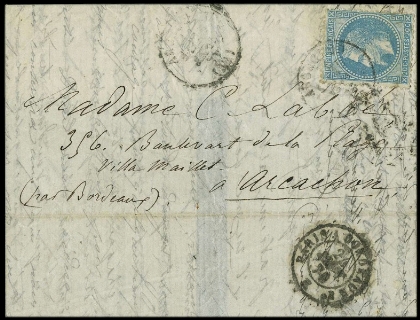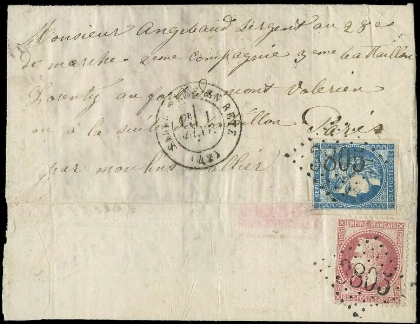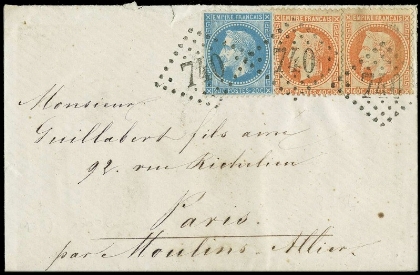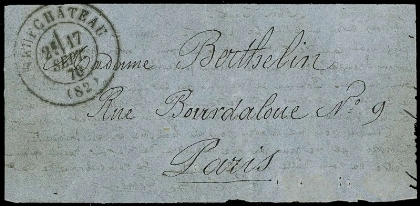During the Franco-Prussian war in 1870-1871, news had to get past the enemy blockades around Paris. And it often did, thanks to a large dose of imagination and fearlessness. One hundred and forty years later, we can admire those letters sent in an inflated ball.
By air, by water and…
The “ballons montés” have become classics in French postal history, so much so that there is a specialist bibliography on the subject. They were the main method whereby people in besieged Paris were able to communicate with the outside world, sending simple messages, letters, memos and newspapers.
Zanaria’s latest 48-page colour net sale price catalogue, entitled “Philately and Postal History”, has a special section dedicated to this category. There are twelve documents included, one of which is particularly remarkable. Not only did it get past the Prussian blockade with the first flight, on 23 September 1870 in the “Neptune” balloon, taking news from besieged Paris to Arcachon; at the same time, it is also a “pli confie”, meaning a letter that was not sent through the city’s postal service, but entrusted to the courageous pilot. The specialists estimate that it is worth around 40 thousand euros; the sale price is available upon request.
Another interesting section in the new catalogue is that of the so-called “boules de Moulins”, a system used to send post into Paris. The missive were packed into zinc containers that were thrown into the river Seine, in the hope that the current would take them to the capital. They were designed to travel beneath the water’s surface so that they wouldn’t be noticed; but while they often managed to avoid being intercepted by the enemy, they very often ended up stuck in the mud of the river bed. Hence, the idea can be considered a failure.
Seven containers were salvaged in 1870 (but only after the city was re-opened), and twenty-four have been found since – the last of which in 1982!
The letters which have been preserved so far are particularly sought-after. Zanaria has two of them, with hand-written directions due to the unusual route. The first left from Saint-Père-en-Retz on 1st January 1871 and bears the “Bordeaux” 20 centimes as well as the 80c “Napoleon Laureate”; it is on sale at 2750 euros.
The other piece, forwarded four days later, is fraked with the 1 franc tariff, paid through one 20 and two 40 centime stamps from the same series, depicting the emperor. This combination is considered uncommon. The catalogue also includes a “Papillon de Metz” dating back to 17 September 1870, offered at 6 thousand euros, which bears witness to the siege organised around that city before it arrived at the capital.
Further examples of this fascinating period can be found among our online stock. In addition to foreign material, the catalogue includes mainly the Italian States, Kingdom and the best items from the Republic. It is available free of charge from the shop in Via Santa Margherita 6, Milan (Tel. 02.805.24.27, fax 02.805.11.86, mail aste@zanaria.com).



